中国组织工程研究 ›› 2016, Vol. 20 ›› Issue (37): 5538-5544.doi: 10.3969/j.issn.2095-4344.2016.37.010
• 肌肉肌腱韧带组织构建 tissue construction of the muscle, tendon and ligament • 上一篇 下一篇
带血管蒂髌韧带修复前交叉韧带损伤:计算机导航辅助关节镜的应用
张 凯1,王伟伟1,王向青2
- 1临沂市沂水中心医院,山东省临沂市 276400;2青岛大学附属医院,山东省青岛市 266000
Patellar ligament with vascular pedicle for anterior cruciate ligament reconstruction: the intraoperative use of computer assisted navigation system combinied with arthroscopy
Zhang Kai1, Wang Wei-wei1, Wang Xiang-qing2
- 1Yishui Central Hospital of Linyi, Linyi 276400, Shandong Province, China; 2Affiliated Hospital of Qingdao University, Qingdao 266000, Shandong Province, China
摘要:
文章快速阅读:
.jpg)
文题释义: 前交叉韧带:属于稳定膝关节重要的结构之一,由前内侧束和后外侧束两个部分组成。当人体处于不同屈曲角度下时,前交叉韧带不同纤维束处于紧张状态,维持机体稳定。前交叉韧带损伤后如果得不到及时有效的治疗,将会引起膝关节松弛、半月板磨损等,演变为骨性关节炎,因此,加强前交叉韧带诊断治疗成为医学界研究重点。 前交叉韧带重建中股骨隧道的定位:关节镜下重建前交叉韧带保证手术疗效的关键是正确建立股骨隧道。经胫骨隧道入路和经前内侧入路建立股骨隧道是目前临床医师最常用的两种股骨隧道定位的方法,但目前仍然存在争议是哪种方式建立的股骨隧道更符合生理功能。Muneta等研究表明前交叉韧带重建术中经胫骨隧道建立的股骨隧道在冠状面角度与胫骨隧道的角度偏差小,可以减少移植肌腱的磨损,同时术者主要专注于建立胫骨隧道,从理论上可缩短手术的时间。
中图分类号:
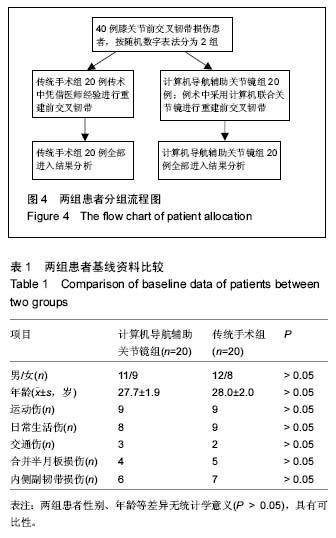
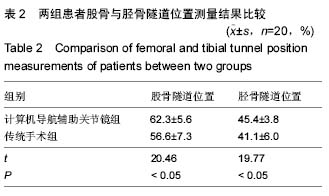
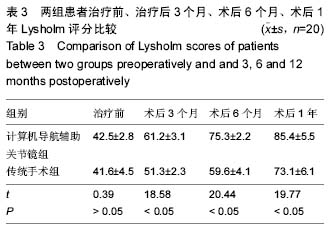
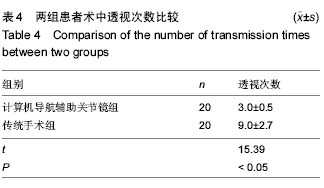
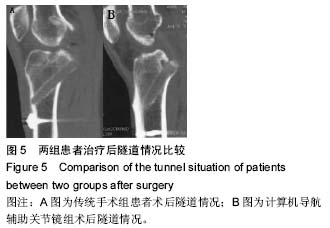
.jpg)
.jpg)
.jpg)
.jpg)